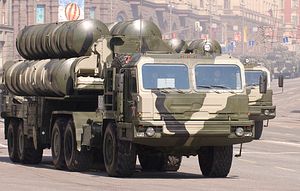The government of India has notified the United States that it will proceed with a purchase of Russia’s S-400 Triumf surface-to-air missile system, the Indian Express reported last week. The notification is significant because it signals India’s intention to go ahead with the sale, whose terms were recently negotiated, despite the threat of U.S. sanctions under the Countering America’s Adversaries Through Sanctions Act (CAATSA).
“With Russia, we have had a continuous relationship of defense procurement of seven decades. We told the U.S. Congress delegation which met me in Delhi that this it is U.S. legislation and not a UN law,” Indian Defense Minister Nirmala Sitharaman said on Friday. “We have had this relationship, an enduring relationship with the Russians and are going ahead with buying the S-400,” she added.
“The U.S. secretary of defense and secretary of state have taken a position understanding of India’s position. They realize that with India, we need to have a different position,” she said.
“If there are objections raised on technical issues, we are willing to explain it to the Americans. Our negotiations have gone for several years on S-400 with the Russians,” Sitharaman continued.
India and Russia concluded negotiations over price in the final days of May, as The Diplomat reported earlier. New Delhi is now seeking to avoid U.S. sanctions for the deal. CAATSA was designed to deter states from engaging in defense commerce with Russia. India and Russia, however, have longstanding defense ties and Moscow continues to be one of India’s top suppliers of defense equipment. Aside from new materiel, India maintains a large inventory of Soviet-era military technology, which requires ongoing maintenance and upkeep through Russia-sourced parts.
The S-400 is among Russia’s most capable air defense systems, with ballistic and cruise missile defense capability. It succeeds the S-300 and features, among other improvements, a more capable radar system and battle management software. The system can launch multiple types of surface-to-air missiles and can provide defensive coverage of a near-200 kilometer radius, depending on its configuration. It’s unclear which missiles India has chosen to procure with its S-400 batteries.
While India continues to engage in significant defense commercial activity with Russia, its interactions with the United States in the area have also increased substantially in recent years. In 2016, the Obama administration declared India a “major defense partner” of the United States — a bespoke status that grants New Delhi access to sensitive U.S. military technology as if it were an allied state. India and the United States are strategic partners, but not allies.
Sitharaman’s remarks follow the postponement of the scheduled inaugural U.S.-India “two-plus-two” ministerial meeting, which would have brought the U.S. secretaries of state and defense together with their Indian counterparts for high-level consultations on a range of issues.
































